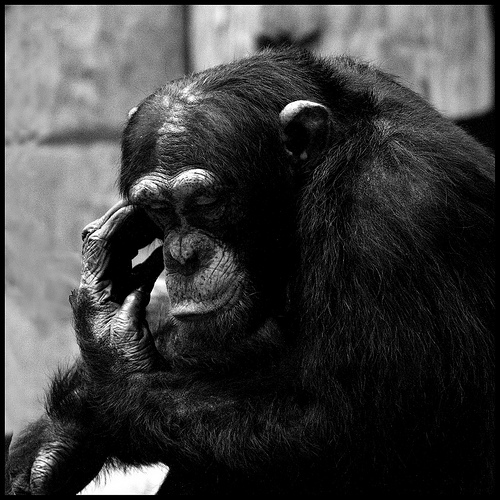 My basic beliefs about the arts and community engagement are fairly well-known to anyone who reads this blog or who has read my book. 1) Community engagement is vital to a healthy future for the arts; 2) substantive community engagement is relatively rare in the established arts world; and 3) since there are no extra resources to add “new” stuff to the list of what we do, mainstreaming engagement–making engagement the core perspective in all management and programming functions–is the only way to successfully transition to an engagement agenda.
My basic beliefs about the arts and community engagement are fairly well-known to anyone who reads this blog or who has read my book. 1) Community engagement is vital to a healthy future for the arts; 2) substantive community engagement is relatively rare in the established arts world; and 3) since there are no extra resources to add “new” stuff to the list of what we do, mainstreaming engagement–making engagement the core perspective in all management and programming functions–is the only way to successfully transition to an engagement agenda.
Much of my work is currently focused on #3. I’ve developed and have begun to present a workshop called Mainstreaming Engagement that allows participants to process how their organizations or work might function differently if engagement were at the root of their thinking. This is a topic I will be addressing even more over the next few months in this blog. As I embark on this enterprise, I wanted to share a brief passage out of the recent biography of Steve Jobs that is apropos.
Instead of a development process in which a product would be passed from engineering to design to manufacturing to marketing to distribution, these various departments collaborated simultaneously. “Our method was to develop integrated products, and that meant our process had to be integrated and collaborative,” Jobs said.
Jobs’ total integration of all facets of the Apple business worked fairly well, to put it mildly. (I won’t comment here on the dysfunctional nature of Jobs’ personality or his dearth of interpersonal skills.)
The model of artistic directors or curators operating in a vacuum to develop programming and then handing it off to the rest of the staff to “sell,” whether or not it ever served arts organizations well, is no longer a healthy approach. It’s the interaction between the arts and communities that give the arts the most meaning and can best justify the resources required. Artistic directors/curators have arts expertise, but that’s only one element of the equation.
More, much more, will be coming. Happy New Year.
—–
Speaking of which, I am beginning a new set of travels in the New Year. FYI, I’m currently scheduled as follows:
Toronto
January 22-23
Ontario Dances (sponsored by the Ontario Arts Council and the Department of Canadian Heritage)
Workshop: “Mainstreaming Engagement”
Workshop: “Artists and Community Engagement: New Thinking Yields New Options”
Keynote Speech: The Arts Build Communities
Texas
February 1
State of the Arts: Strategies for Success (Texas Commission on the Arts & Texans for the Arts: Austin)
Keynote Speech: “Engaging for Success”
Workshop: “Mainstreaming Engagement”
North Carolina
February 9
Southern Entrepreneurship in the Arts Conference (Greensboro)
Workshop: “Artists and Community Engagement: New Thinking Yields New Options”
Louisiana
March 7
New Orleans Arts Council Workshop: “Artists and Community Engagement: New Thinking Yields New Options”
March 9
Association of Arts Administration Educators Panel: Teaching Community Engagement
North Carolina
April 9 (2013)
Raleigh-Arts Day 2013: “Building Communities, Not Audiences”
There are several other trips under development as well. Anyone interested in keeping up with my whereabouts can check in at: http://www.artsengaged.com/content/artsengaged-road.
—–
Engage!
Doug

Looking forward to reading your posts on mainstreaming. Audience or community engagement is gaining ground in Canada, especially with the Canada Council for the Arts and the Ontario Arts Council. Your advice will be helpful. Thanks!
Thank you Denis for your comment. Audience and community engagement are very important to the Ontario Arts Council. Wonderful things can happen when artists and communities collaborate. Doug, thank you for sharing your insights and expertise during the Ontario Dances workshops!
While I was Woolly Mammoth’s first Connectivity Director, the initiative was getting a tremendous amount of buzz. I received calls and emails from colleagues at regional theatres of varying sizes/aesthetics about what we were doing, how Connectivity was started, what comprised its body of work, how my position integrated with the rest of the theatre… always boiling down to: how could they, should they “do Connectivity”? After sharing how totally jazzed I was they were interested in real engagement work, I encouraged them to return to their leadership and, first things first, interrogate how/why this engagement impulse was intimately connected to their mission. Connectivity grew from Woolly’s mission; that impulse engagement cannot be cookie-cuttered on to a theatre with a different raison d’etre. Your “mainstreaming” initiative seems similarly inclined and I applaud it complete. Looking forward to hearing more about.